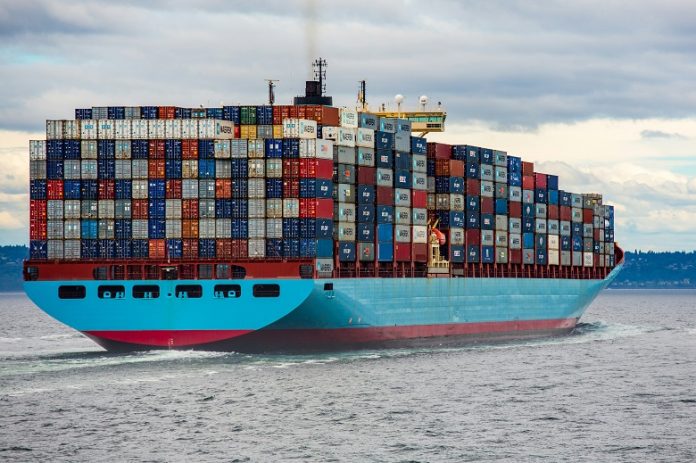Global trade is ready for a strong but uneven recovery after the shock of the pandemic, according to the World Trade Organization (WTO).
In its trade statistics and trade forecast 2021, the WTO estimates world trade in merchandise, or goods, will grow 8% in volume in 2021, after falling 5.3% in 2020.
“Ramping up production of vaccines will allow businesses and schools to reopen more quickly and help economies get back on their feet,” said WTO Director-General Ngozi Okonjo‑Iweala.
The following seven charts explore the data in more detail.

If vaccine production and distribution accelerates, global output – GDP – would add about 1 percentage point in 2021. The volume of world trade in merchandise would also grow by about 2.5 percentage points, and trade would return to pre-pandemic levels by the last three months of the year. This is the upside scenario.
The downside scenario is that vaccine production does not keep up with demand. New variants of the virus which are more resistant to vaccines could also emerge. This could shave 1 percentage point off of global GDP growth in 2021 and lower trade growth by nearly 2 percentage points.
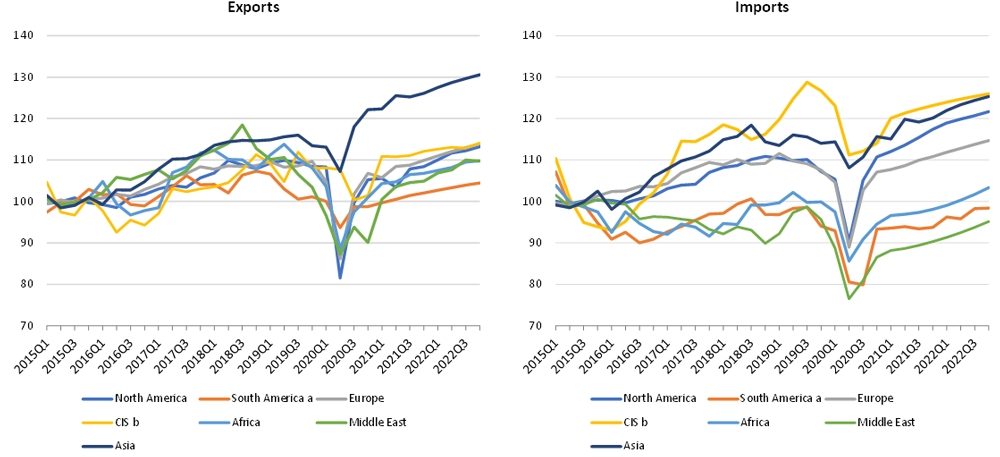
In the second quarter of 2020, North America and Europe saw sharp year-on-year falls in export volumes, down 25.8% and 20.4% respectively. These recovered to year-on-year declines of 3% and 2.4% by the fourth quarter of 2020.
In Asia, exports fell 7.2% in the second quarter of 2020, but by the fourth quarter, were up 7.7% compared to the previous year.
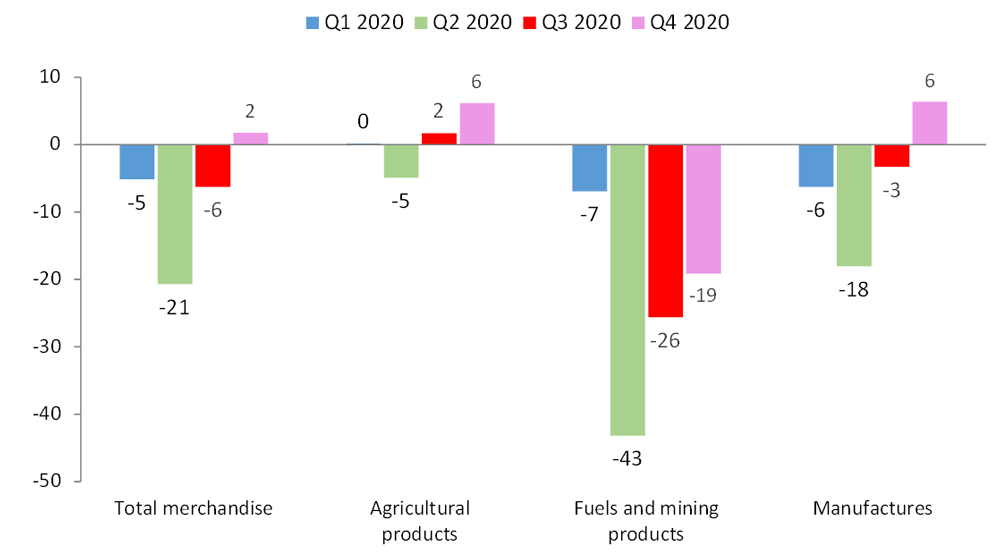
The value of world trade in manufactured goods was 6% higher in the fourth quarter of 2020 compared to the same period in 2019.
This may be down to factories reopening once COVID-19 safety measures were put in place. Trade in agricultural products was up by a similar amount over the same period.
Fuels and mining products were still down 19% in the fourth quarter.
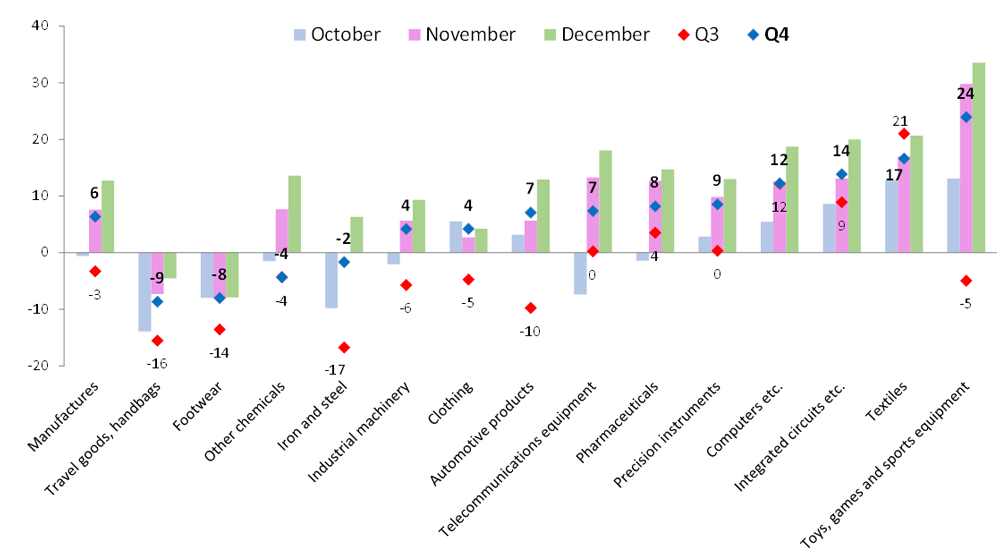
Most categories of manufactured goods saw significant gains in the second half of 2020.
The decline in the world iron and steel trade was rapid, going from 17% to 2% between the third and fourth quarters.
Textiles grew strongly in both quarters, which “probably reflects high demand for medical face coverings,” the WTO said.
Electronic goods including computers also saw steady growth of 12% in the second half of 2020, fuelled by the switch to remote working.

Travel and transport services globally slumped 63% and 19% respectively in 2020 compared to 2019, impacted by restrictions to contain COVID-19.
Faring better was the ‘other commercial services’ category, which includes financial services and computer services. This “held up well, falling only 2%,” the WTO says.
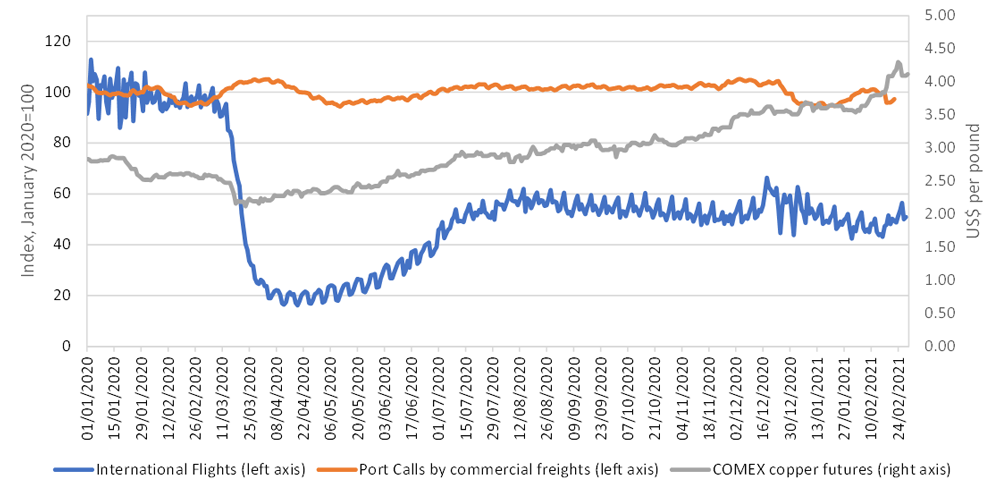
To understand global trade better during the pandemic, the WTO has been tracking indicators that provide more frequent data. Three of these are shown in Chart 6.
Daily international flights (which frequently carry air freight shipments) fell around 80% in the first quarter of 2020 with COVID-related border closures. An uptick at the end of 2020 flattened again in 2021 with a resurgence of the virus.
Seaborne transport has been steadier during the pandemic. Port calls of container ships dipped in February and April of 2020, reflecting peak periods of infection.
Daily prices of copper futures contracts fell sharply in March 2020, as the pandemic took hold, but have risen since then – again, a reflection on the switch to remote working, as copper is a key material in the manufacturing of electronics.
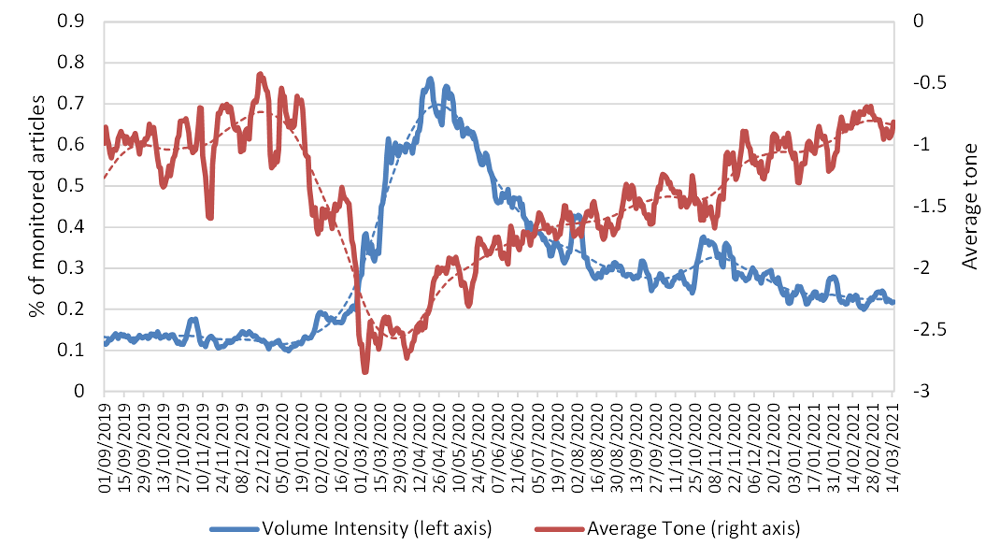
The seventh chart tracks the volume and tone of news reports related to “economic activity”.
“At the height of the pandemic, press reporting increased and the average tone of articles was mostly negative,” the WTO says.
The tone became more positive in November as vaccines were announced, but has flattened again, which could be related to the resurgence of the pandemic.
Source: World Economic Forum

